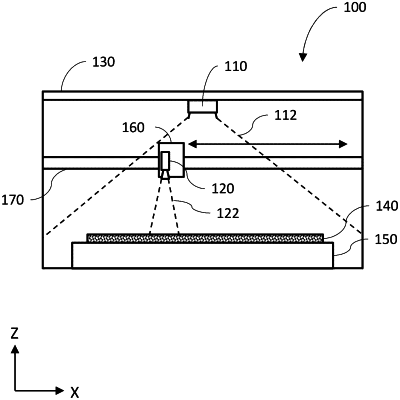| CPC G05B 19/4099 (2013.01) [G05B 13/041 (2013.01); G05B 19/41885 (2013.01); G05B 2219/41354 (2013.01); G05B 2219/49023 (2013.01)] | 18 Claims |

|
1. A system, comprising:
at least one processor;
at least one non-transitory computer-readable medium; and
program instructions collectively stored on the at least one non-transitory computer-readable medium that are executable by the at least one processor such that the system is configured to:
receive one or more configurations for a fabrication process during which a computer numerically controlled (CNC) machine delivers an electromagnetic energy configured to effect, in a material, one or more changes consistent with one or more designs, the one or more configurations including (i) a design file corresponding to the one or more designs, (ii) one or more characteristics of the material, and (iii) one or more settings of the CNC machine;
receive an input indicating a command to cause the CNC machine to begin the fabrication process;
prior to causing the CNC machine to begin the fabrication process, determine, based on an analysis of the one or more configurations, whether a thermal event is likely to occur during the fabrication process, the thermal event corresponding to one or more regions of the material exhibiting a change that is inconsistent with the one or more designs in response to the electromagnetic energy being delivered to the material, wherein the analysis of the one or more configurations includes performing one or more simulations of the fabrication process to thereby determine a cumulative quantity of energy exposure across the material and/or a quantity of energy exposure across the material at successive points in time during the fabrication process;
based on determining that a thermal event is not likely to occur during the fabrication process, execute the command to cause the CNC machine to begin the fabrication process; and
based on determining that a thermal event is likely to occur during the fabrication process, (i) refrain from executing the command to cause the CNC machine to begin the fabrication process and (ii) generate a visual preview of the one or more designs, where the visual preview of the one or more designs shows a predicted final appearance of the material resulting from the CNC machine performing the fabrication process, including a heat map for the design that indicates the one or more regions of the material corresponding to the thermal event.
|